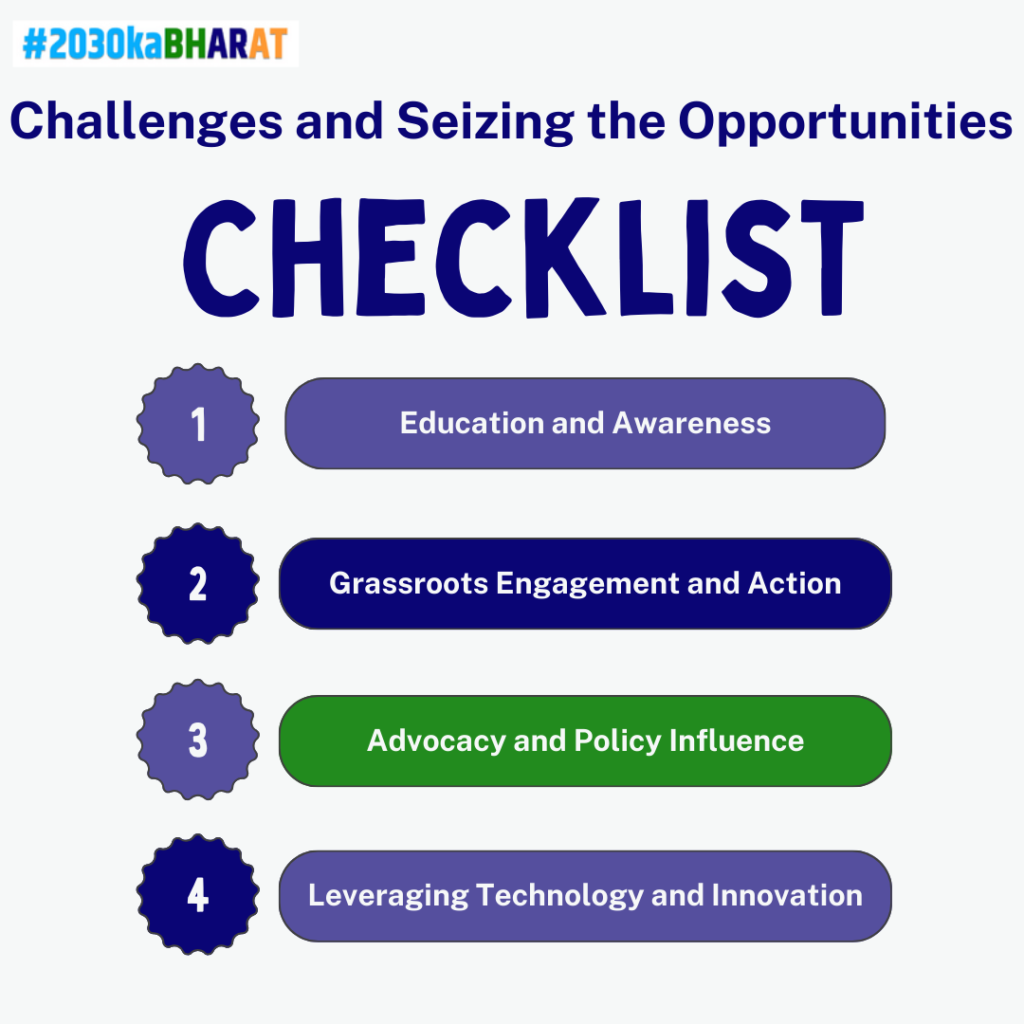India, a nation of unparalleled vibrancy and diversity, stands at a pivotal juncture in its journey towards sustainable development in india. With a burgeoning population, burgeoning aspirations, and the looming specter of climate change, the path ahead demands transformative solutions and unwavering commitment. In this critical era, the torch of environmental stewardship burns brightest in the hands of a dynamic force – the youth of India.
The Imperative of Environmental Stewardship
Sustainable development, as enshrined in the United Nations Sustainable Development Goals (SDGs), seeks to meet the needs of the present without compromising the ability of future generations to meet their own. Environmental stewardship, its very bedrock, demands responsible management of our natural resources, active conservation efforts, and a relentless pursuit of ecological harmony. In India, where environmental challenges like air pollution, water scarcity, and deforestation pose an existential threat, ensuring environmental stewardship is not merely a lofty ideal; it is the very precondition for a thriving future.
Youth: Agents of Change in a Complex Landscape
India’s youth, comprising over 356 million approx individuals under the age of 35 (ratio), present a unique resource. They are brimming with idealism, energy, and a natural affinity for innovation. Unlike preceding generations, they have grown up witnessing the stark consequences of environmental degradation and are acutely aware of the urgency of change. This inherent sensitivity, coupled with their tech-savviness and entrepreneurial spirit, empowers them to be formidable agents of environmental stewardship.
However, the pathway for these young change-makers is not without its thorns. A staggering 25% of India’s youth rate remain unemployed, and access to quality education and skill development, particularly in rural areas, continues to be a significant hurdle. Furthermore, a lack of awareness about environmental issues and limited avenues for meaningful participation in decision-making processes often leave their enthusiasm untapped.

Navigating the Challenges and Seizing the Opportunities
Despite these challenges, the landscape for youth engagement in environmental stewardship is evolving rapidly. A multitude of opportunities beckon, waiting to be seized.
- Education and Awareness: Reorienting education systems to integrate environmental education with a focus on hands-on learning, ecological values, and critical thinking is crucial. Initiatives like the Young Eco-Club program by the Ministry of Environment, Forest and Climate Change are commendable steps in this direction. Further expansion and integration of such programs coupled with innovative approaches like gamification and storytelling can foster environmental literacy and empower youth to become responsible stewards.
- Grassroots Engagement and Action: Encouraging youth participation in on-the-ground initiatives – from afforestation drives and waste management projects to biodiversity conservation efforts – allows them to witness the tangible impact of their actions. Supporting youth-led social enterprises and startups focused on renewable energy, sustainable agriculture, and eco-friendly products fosters not only environmental benefit but also economic opportunities. Recognizing and amplifying existing grassroots movements like ‘Fridays for Future’ and ‘Safai Sulabh Sangathan’ further fuels the fire of youth-driven environmental action.
- Advocacy and Policy Influence: Equipping youth with the tools and skills for effective advocacy empowers them to push for stronger environmental regulations and hold decision-makers accountable. Platforms like youth parliaments and environmental councils can provide avenues for their voices to be heard and their concerns addressed. Initiatives like the Climate Parliament of India demonstrate the potential of youth-led policy dialogues in shaping a sustainable future.
- Leveraging Technology and Innovation: The digital revolution presents a powerful tool for environmental action. Young tech whizzes can develop apps for monitoring air quality, waste management, and resource conservation. Social media platforms can be harnessed to mobilize youth, spread awareness, and galvanize communities. Additionally, fostering youth participation in research and development related to renewable energy, clean technologies, and climate change adaptation can unlock groundbreaking solutions.

Transforming Challenges into Catalysts
The obstacles faced by youth, instead of serving as deterrents, can be transformed into catalysts for innovation and resilience. Bridging the digital divide and equipping rural youth with relevant skills through mobile-based learning platforms can bridge the knowledge gap. Creating accessible platforms for youth to exchange ideas, share best practices, and collaborate on projects can foster a sense of community and empowerment. Furthermore, supporting youth-led fundraising initiatives and providing access to microfinance can help overcome resource constraints and turn their environmental dreams into reality.
A Beacon of Hope: Stories of Impact
Across India, inspiring stories of youth-led environmental stewardship are being etched. Afroz Shah, a teenager from Mumbai, transformed a garbage dump into a lush green haven. Arunav K. M. established a student-led organization collecting plastic waste to make eco-friendly bricks. In Assam, the Green Brigade, a youth-led movement, is combating deforestation and promoting sustainable livelihoods. These stories are not mere outliers; they are testaments to the boundless potential of Indian youth to drive transformative change.
Unleashing the Power of Collaboration: A Call to Action
The journey towards a sustainable India requires a symphony of voices, a tapestry woven from the threads of collaboration. Government, civil society, educational institutions, and the private sector must all come together to create an enabling environment for youth to flourish as environmental stewards.
- Government: Implementing robust policies that incentivize youth participation in environmental initiatives, providing financial and technical support to youth-led projects, and integrating environmental stewardship into national development plans are crucial steps. Recognizing and celebrating the achievements of young environmental champions can inspire a generation.
- Civil Society: NGOs and grassroots organizations can provide platforms for youth engagement, offer mentorship and training, and connect them with opportunities for action. Facilitating cross-generational dialogue and knowledge exchange between experienced environmentalists and young changemakers can bridge the gap between experience and innovation.
- Educational Institutions: Reforming educational curricula to prioritize environmental education, encouraging hands-on learning and project-based activities, and fostering a culture of environmental responsibility within schools and colleges can equip youth with the knowledge and skills they need to become effective stewards.
- Private Sector: Companies can play a vital role by incorporating sustainability principles into their operations, supporting youth-led environmental initiatives through partnerships and CSR programs, and providing employment opportunities in green sectors. Embracing innovation and investing in technologies developed by young minds can drive sustainable solutions.
Empowering the Changemakers: Building a Supportive Ecosystem
Beyond policy and partnerships, fostering a supportive ecosystem is essential to empower youth environmental stewards. This includes:
- Investing in mental health and well-being: Environmental activism can be emotionally taxing. Providing access to mental health support and creating safe spaces for youth to share their experiences and challenges can help them persevere in their endeavors.
- Promoting diversity and inclusion: Ensuring that all young people, regardless of their background, gender, or socio-economic status, have equal access to opportunities and resources to participate in environmental stewardship is crucial. Championing inclusive initiatives and celebrating the contributions of diverse voices can strengthen the movement.
- Nurturing leadership skills: Equipping youth with leadership skills through workshops, training programs, and mentorship opportunities can empower them to take ownership of environmental initiatives, mobilize their peers, and drive change within their communities.
Case Studies and Success Stories
1. Clean Ganga Project: Community-Led Restoration Efforts
The Ganges, or Ganga, is not just a river in India; it holds immense cultural, spiritual, and environmental significance. Unfortunately, rapid urbanization, industrialization, and improper waste disposal have severely polluted the Ganga. In response to this crisis, numerous youth-led initiatives, including the “Clean Ganga” project, have emerged.
Background:
- Issue Addressed: Water pollution, waste mismanagement, and environmental degradation of the Ganga.
- Youth Involvement: Engaged and passionate young volunteers form the backbone of the project.
Approach:
- Community Engagement: The Clean Ganga project prioritizes community involvement, recognizing that sustainable change requires local participation.
- Waste Management Initiatives: Youth volunteers organize clean-up drives along the riverbanks, removing plastic waste and other pollutants.
- Awareness Campaigns: The project conducts extensive awareness campaigns in nearby communities to educate residents about responsible waste disposal and the importance of preserving the Ganga.
Impact:
- Cleaner Waterways: Through consistent efforts, the project has contributed to the reduction of pollutants in the Ganga.
- Behavioral Change: The awareness campaigns have led to positive changes in waste disposal practices among local residents.
- Community Empowerment: The project has empowered local communities to take ownership of the Ganga’s well-being, fostering a sense of environmental stewardship.
Source: Namami Gange Programme

2. Jadav Payeng – The Forest Man of India: Individual Afforestation Efforts
Jadav Payeng, popularly known as the “Forest Man of India,” is an inspirational figure whose individual efforts have significantly contributed to afforestation and biodiversity conservation.
Background:
- Issue Addressed: Deforestation and habitat loss leading to a decline in biodiversity.
- Youth Involvement: Jadav Payeng began his afforestation efforts as a teenager and continues to inspire younger generations.
Approach:
- Individual Initiative: Starting in 1979, Payeng single-handedly planted and nurtured a vast forest on Majuli Island in the Brahmaputra River.
- Long-Term Commitment: Payeng’s dedication to his cause has seen him plant trees over several decades, transforming a barren landscape into a thriving ecosystem.
- Biodiversity Conservation: The forest, known as Molai Forest, is now home to a diverse range of flora and fauna, including elephants, tigers, and deer.
Impact:
- Ecosystem Restoration: Molai Forest stands as a testament to the transformative impact of individual efforts on environmental conservation.
- Biodiversity Flourishing: The forest has become a haven for wildlife, showcasing the potential for individual contributions to ecological balance.
- Inspiration for Youth: Payeng’s story motivates younger generations to take personal responsibility for environmental conservation.
Source: Jadav Payeng

These case studies underscore the potency of youth-led initiatives in addressing environmental challenges. Whether through community engagement along the Ganga or the individual commitment of Jadav Payeng, these examples showcase the tangible impact that passionate and informed youth can have in fostering sustainable development in India. Such initiatives not only contribute to environmental restoration but also serve as powerful catalysts for wider societal change.
The Future Beckons: A Message of Hope
The challenges India faces are undeniably immense, but the spirit of its youth is even greater. Their passion, their ingenuity, and their unwavering commitment to a sustainable future offer a beacon of hope. By fostering a supportive ecosystem, empowering them with the right tools and resources, and collaborating across sectors, we can unleash the boundless potential of India’s youth to become the driving force of environmental stewardship and build a thriving, sustainable future for all.
This article has provided a glimpse into the landscape of youth engagement in environmental stewardship in India. However, the story is far from complete. As new challenges arise and innovative solutions emerge, this narrative will continue to unfold, fueled by the passion and dedication of young changemakers. Let us join hands, support them in their endeavors, and together, pave the way for a future where environmental stewardship is not just a dream, but a vibrant reality.

